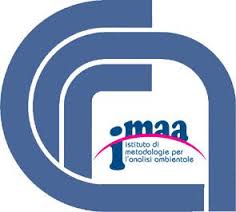CUT
Remote Sensing and Geo-Enviroment Lab established at the CUT is consisted of more than 40 researchers and is the largest research group at the University. Since 1999, the PI has participated in more than 55 funded projects with funding sources from FP6, FP7, Eureka, Life +, MED, Marie Curie, ERASMUS+, COST, ESA, EC regional funds, national funds such as the Cyprus Research Promotion Foundation (CRPF) and industry. The Lab, coordinated by Prof. Hadjimitsis has vast experience in the field of RS, GIS and smart techniques for monitoring the environment. Its multidisciplinary personnel has already established research expertise on GIS, RS, CH, archaeology, 3D modelling, risk assessment, civil engineering and architecture, etc. The Lab includes state-of-the-art equipment that will be mobilized for the implementation of the project.
CNR
IMAA and IBAM are two institutes of CNR with Laboratories specialized in the application of Satellite Remote Sensing, LiDAR, GIS, Virtual reality, non-invasive tests for Archaeological research, landscape, and Cultural Heritage valorization and conservation.
Equipment of CNR: Electrical Resistivity tomography, 1magnetometer, 2 GPR, magnetic susceptibility, sonic and seismic, drone, commercial and open source softwares, several servers, guest rooms, wide worldwide network of collaboration with archaeological community, laser scanner, tools for 3d modelling. Current projects involved: INTERREG, ARCHIMED, CNR Curiosity Driven projects, Italian Ministry of Foreign Affairs, Bilateral projects with CSIC Spain and CAS China, FP6, FP7, PON, ERDF, European Space Agency Cat1 project, Italian Ministry of Education, University and Research Programme. European Space Agency Cat1 project, Bilateral project with CONCITEC Peru and Chinese Academy of Sciences, PO-ERDF Basilicata Region, Italian Ministry of Foreign Affairs, EU Culture.
DLR
DLR, the German Aerospace Center, is Germany‘s national research centre for aeronautics, space, energy, transport, defence and security. The Earth Obervation Center (EOC) of DLR with the German Remote Sensing Data Center (DFD) and the Remote Sensing Technology Institute (IMF) supports science and industry as well as the general public. With its national and international receiving stations, DFD offers direct access to data from earth observation missions, derives information products from the raw data, disseminates these products to users, and safeguards all data in the National Remote Sensing Data Library for long term use. Its geoscience research related to the atmosphere, global change and civil security facilitates access to products and approaches based on remote sensing and consolidates their utilization in scientific and commercial domains. As one of the European Copernicus Processing and Archiving Centers (PACs) for the Sentinel-missions, involved in several Copernicus core services and being the key German institution to built and operate the Copernicus collaborative ground segment, the EOC has extensive knowledge and links to data, science and infrastructure in Copernicus. The Land Surface department of DFD (LAX) functions as a link connecting the engineering-related activities of the Earth Observation Center (EOC) with the applied geosciences and their spatially dispersed applications. By selecting the right remote sensing sensor systems and appropriate methodologies, the Land Surface department is in a position to provide the specific information products desired in fields such as geology, soil science, geography, agriculture, forestry, and ecology. LAX is also in charge for the management of the scientific exploitation of the German TerraSAR-X mission, including the support of archaeologic research with SAR data. The Photogrammetric department of the DLR-IMF (PBR) has been calibrating and operating its own airborne imaging spectrometers (ROSIS, HySpex) and is developing software tools for data processing and analysis for different application fields. DLR is strongly engaged in the definition of standards and protocols from the sensor calibration up to the definition of land products. The members of the PBR are directly involved in the ground segment of the future German space-borne hyperspectral EnMAP mission. The SAR team of the DLR-IMF is an international leader in space borne synthetic aperture radar (SAR) processor development and SAR interferometry. It has developed the processors for the German national radar missions SRTM, TerraSAR-X and TanDEM-X. It holds many international patents on SAR processing and post-processing and shares its expertise in summer schools, curricula and international science exchange. Equipment of DLR: Apart from large scale satellite payload data systems (antennas, archives, processors (see chapter describing these); DLR’s Optical Airborne Remote Sensing and Calibration Homebase (OpAiRS) to operate and calibrate airborne hyperspectral sensors (e.g. ROSIS and HySpex) and field spectrometers. DLR’s 3K airborne camera system. DLR’s research




